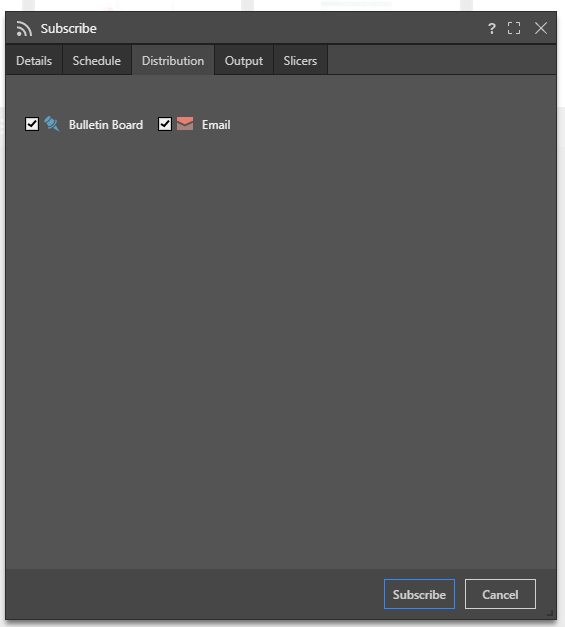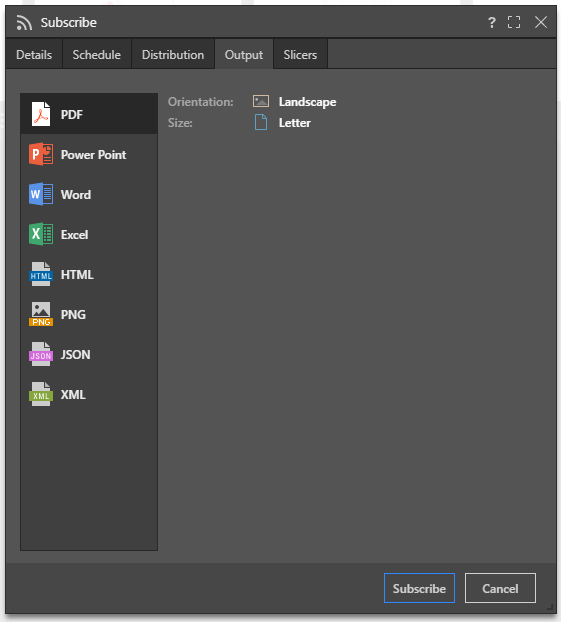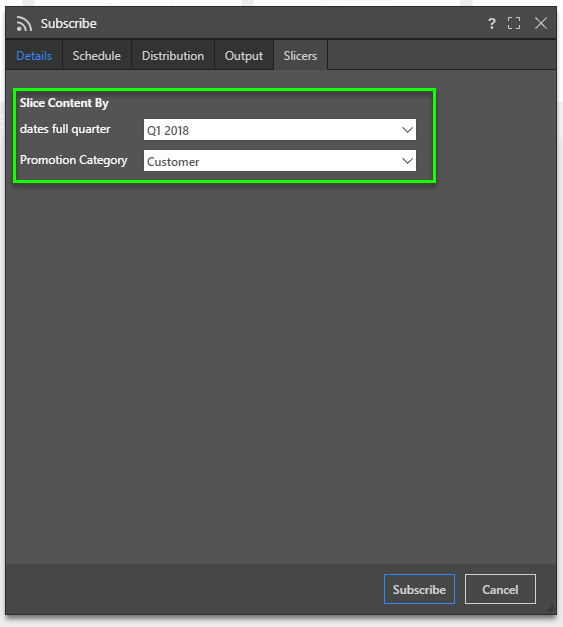If enabled (by admins), viewers can subscribe to existing Publish templates - allowing them to orchestrate the rendering of the content in their chosen format, on their own schedule with their chosen slice of data.
This feature is available with an Enterprise license only.
When subscribing to content and distributing it to other users, the subscription runs as the initiating user. The recipient to whom the subscription is distributed receives content with the same data that the initiating user can access and see. This means the recipient may see unsecured data. If you want to distribute data dynamically, sending different data from the same report to different user based on their data access rights, configure and deploy dynamic distribution in publications. In this way, the recipient will only see data for which they have permissions.
Creating a Subscription to Publications
Clicking on a (blue) Publish item in the content explorer, viewers will be presented with the following dialog panels.
Details - give your subscription a name and message (so you'll know what it is in the future)

Schedule - choose your delivery schedule. Use the simple set of choices in the drop down. Click the advanced button for the more advanced scheduling tool.

Distribution - the content is always designated to you only. However you can choose how it will arrive. Choices will depend on what is enabled in the system.

Output - choose the rendered document format you prefer to receive the content in.

Slicers - if you have access to various slicers of data, you will have the option to choose which exact slice of data you want your subscription to render and deliver.

Data Source Authentication
If the data source used in the discovery or presentation is based on Windows Authentication, then a separate panel will be presented to the user. The user may need to supply a set of credentials to successfully submit the scheduled task.
This often occurs when the authentication method for the data source is set to "End-user" Windows Authentication. Under this model, the user running the queries is used to connect (via Kerberos token) to the data source. However, when running a batch task (offline), the user's token is not available - as such a set of their credentials is required for connectivity by the Pyramid engine.
This may not be required if the website authentication is via Basic or Forms.
Schedules can also be configured for SAP BW sources if SAP Logon Tickets is selected as the authentication method in the Admin console. In this case, you'll be prompted to enter the relevant credentials.
Note:SAP Logon Tickets are available with an Enterprise license only.